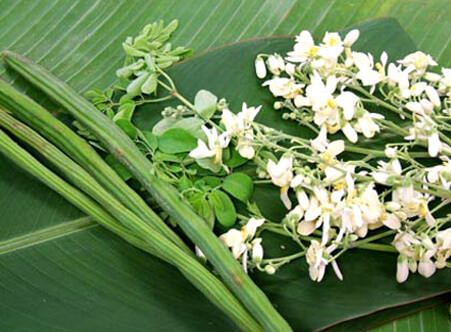Moringa: Benefits, Uses and Properties
The moringa or moringa oleifera is a plant originally from India and Pakistan valued for its therapeutic properties. Because of its nutritional value and its multiple uses as a natural remedy, this plant is also known as the Trees for Life.
The cultivation of the moringa, known in other areas as a moringa tree, has spread to other continents, especially because it grows very fast.
The Food and Agriculture Organization of the United Nations (FAO) recognizes moringa as an important natural resource because of its nutritional value. Leaves, seeds, sheaths, fruits, flowers, roots and bark are also used.
Table of Contents
Moringa nutritional properties
- Contains a high amount of antioxidants.
- It provides proteins (present in the leaves, branches and stems of the moringa) and essential amino acids.
- Flowers and fruits are rich in vitamins A, B and C.
- It provides vitamin E and K.
- Minerals (iron, potassium, calcium, phosphorus, magnesium, selenium …).
- The seeds stand out for its oil content.
Medicinal properties of the moringa
Despite its nutritional value, the truth is that moringa has been more used as a natural remedy to relieve the discomfort of numerous ailments.
The moringa has aroused the curiosity of researchers to try to contribute scientific validity of the medicinal properties that are attributed to it.
- Moringa is good for diabetes, since as several laboratory studies have concluded, leaf dust extract can help to control glucose. It is recommended to use as a supplement to the treatment of diabetes.
- Moringa is good for cholesterol. The leaves of the moringa become famous with the effect of helping to reduce the fat levels in the fat.
- The moringa serves to heal wounds and accelerate its healing.
- The moringa benefits for arthritis are due to its analgesic and anti-inflammatory effect that helps mitigate the pain.
- The moringa for heartburn is another natural remedy that is used. It improves ulcers.
- Moringa leaves are attributed to its antioxidant content, an antitumor effect, that is, it would help reduce the risks of cancer cell formation.
- Stimulates blood circulation.
- Its vitamin A content would help to prevent eye problems.
How to take moringa
- The fruits of the moringa are cooked.
- The seeds can be eaten raw or toasted.
- The leaves of the moringa and flowers combine with salads and as a side dish of cold dishes.
- With the roots of the moringa infusions are prepared.
